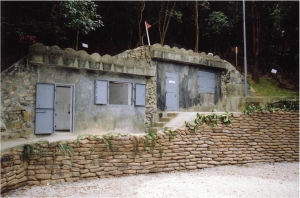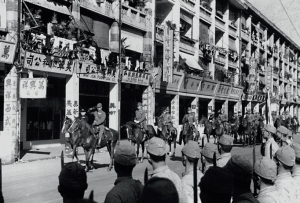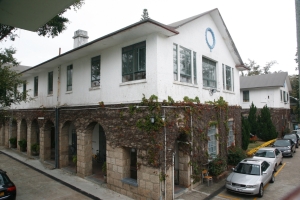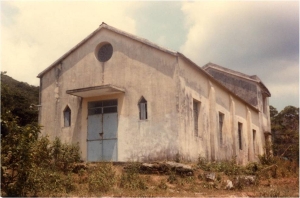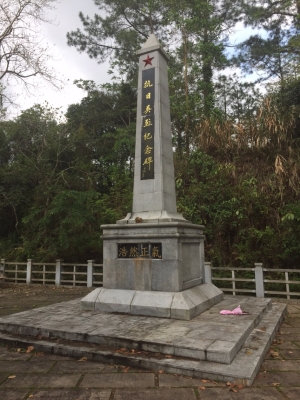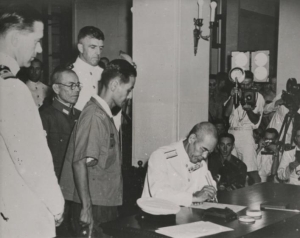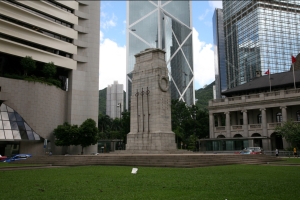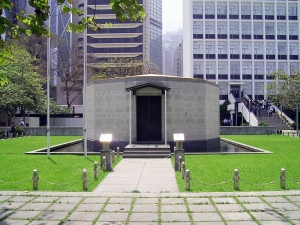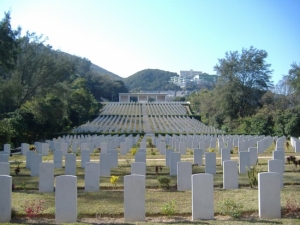Remembering history and treasuring peace
|
Last Thursday, both the Central People’s Government and the Hong Kong Special Administrative Region Government organised activities to commemorate the 70th anniversary of the victory of the Chinese people’s war of resistance. Warfare may seem far away and unfamiliar to the young people of Hong Kong today, but the civilians and veterans who experienced the Japanese invasion and occupation can hardly hide their pain when reminded of those bleak days. In our city, there are still many monuments and buildings related to this part of history, standing silently and telling us the stories of those times. I would like to introduce a couple of these monuments and buildings to you, and revisit some episodes of history together. On December 8, 1941, Japanese aircraft set off from Guangzhou and launched an air raid on Kai Tak Airport, while at the same time Japanese troops crossed the Shenzhen River and advanced southward into the New Territories. On December 12, the New Territories and Kowloon Peninsula fell to the Japanese, forcing the troops defending Hong Kong to retreat to Hong Kong Island. On December 18, the Japanese gathered forces to land at North Point, Taikoo and Quarry Bay, and engaged in a number of fierce battles with the defending troops. One of the most savage battles took place in Wong Nai Chung Gap, Wan Chai. As Wong Nai Chung Gap was a strategic location controlling the north-south traffic of Hong Kong Island, the Japanese troops swiftly launched a fierce attack on this military fortification soon after landing. The 200 or so soldiers of the West Brigade Headquarters defending Wong Nai Chung Gap at that time were mainly Canadians of the Winnipeg Grenadiers, who had only arrived in Hong Kong a couple of weeks beforehand. Despite a lack of weapons and support, they still mounted a resilient defence against the Japanese troops. They eventually capitulated after 16 hours of intense battle, with more than half of them killed in action. After 18 days of defence, Sir Mark Young, the then Governor of Hong Kong, surrendered to the Japanese at the Peninsula Hotel (now a Grade 1 historic building) in Kowloon on December 25. Today, the Wong Nai Chung Gap Military Site has been accorded Grade 2 status, and we can still see the military structures which were used as the commander’s office and bunker positions at that time. The Government has set up a military trail there to enable us to revisit this episode in history. After the surrender, some of the soldiers and civilians captured were detained in the internment camps in Stanley, Sham Shui Po and Argyle Street. The one in Stanley was the original St Stephen’s College integrated with the nearby Stanley Prison Warders’ Quarters. In mid-December 1941, the school was used by the British troops as an emergency military hospital. On the morning of December 25, it was taken over by the Japanese troops. Many of the wounded soldiers, medical personnel and teaching staff inside were killed, and the school was turned into an internment camp. Records show that about 3 000 detainees were housed in the Stanley internment camp during the Japanese occupation. The camp survivors were subject to constant hunger, disease and forced labour during their internment. After the War, the college re-opened and a chapel was built in 1950 to commemorate those who suffered and died in the internment camp. Today, the college’s School House is a declared monument, while a number of hostels and bungalows and the college chapel have been accorded Grade 2 and Grade 3 status. If you visit the college, please take a look at the stained glass above the front door of the chapel, which depicts the scenes in the internment camp at that time and reminds us of this dark period in history. Apart from the internment camps, the Japanese troops also imposed a number of severe measures such as the mandatory requisition of supplies and excessive issue of military notes. The number of Hong Kong people and prisoners of war killed by the Japanese army is hard to estimate. People lived in hardship, facing persistent and severe shortages of food and supplies, and many people fled from Hong Kong. Statistics show that the population of Hong Kong plummeted from about 1.6 million to about 600 000 by 1945, when the Japanese Occupation ended. During this period of three years and eight months, some Hong Kong people and indigenous residents of the New Territories did not give up and formed guerrilla units to defend their homeland, which later became the famous Hong Kong Independent Battalion of the Dongjiang Column. Based in the New Territories, they helped rescue over 800 Chinese intellectuals and their families as well as nearly 100 European, American and Indian soldiers. In addition, they also helped gather intelligence and sabotage Japanese military facilities. The place where the Hong Kong Independent Battalion declared its establishment, the Rosary Mission Church in Wong Mo Ying, Sai Kung, is now a Grade 2 historic building. Though it kept a low profile, the battalion was betrayed by traitors, who leaked information to the Japanese troops in the autumn of 1944. The Japanese troops quickly surrounded Wong Mo Ying village and used torture to extort information from villagers in the Rosary Mission Church. Not getting any information, the troops ransacked the village and left. Similar brutalities also happened in Wu Kau Tang, Tai Po, where a number of villagers refused to divulge information and were tortured to death. After the war, the villagers erected a cenotaph on a hillside in Wu Kau Tang to honour all those who had laid down their lives. The cenotaph was relocated later and was recently included in the State Council’s List of State Facilities and Sites Marking the War of Resistance Against Japanese Aggression. |
|
6 September, 2015
Back